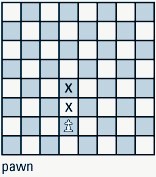Popular chess engines are powerful computer programs designed to play chess at a high level of proficiency. They utilize advanced algorithms, heuristics, and artificial intelligence techniques to analyze positions, evaluate moves, and make decisions during gameplay.
Chess engines have a rich history dating back to the mid-20th century when early programs like NSS and Mac Hack emerged. The development of faster computers in the 1970s led to pioneering engines like Belle and Cray Blitz, which competed in human tournaments. The 1990s saw the rise of commercial engines like Fritz and Junior, while the 2000s witnessed the dominance of open-source engines like Stockfish and Komodo. Today, chess engines continue to advance, leveraging artificial intelligence and deep learning techniques to push the boundaries of computer chess and challenge human grandmasters.
Here are some interesting stats about chess engines:
Top Engines: Some of the most popular chess engines include Stockfish, Komodo, and Houdini. These engines consistently rank among the strongest in the world and are widely used by players, coaches, and analysts for training and analysis.
Evaluation Function: Chess engines employ an evaluation function to assess the relative strength of different positions on the board. This function considers factors such as material balance, piece activity, pawn structure, king safety, and positional advantages to determine the desirability of a given position.
Search Algorithms: Chess engines use sophisticated search algorithms, such as alpha-beta pruning and Monte Carlo tree search, to explore possible moves and anticipate future outcomes. These algorithms allow engines to navigate the vast space of possible moves and variations efficiently, even in complex positions.
Deep Analysis: Modern chess engines can analyze positions to a depth of dozens of moves or more, calculating millions of positions per second. This deep analysis enables engines to identify tactical opportunities, formulate long-term plans, and anticipate opponent responses with remarkable accuracy.
Opening Books and Endgame Tables: Chess engines are often equipped with extensive opening books and endgame tables, providing them with pre-calculated sequences of moves and optimal strategies for different stages of the game. This knowledge base enhances their performance and enables them to play at a level comparable to top human players.
Online Platforms: Chess engines are integrated into popular online chess platforms, allowing players to compete against computer opponents of varying strengths, receive real-time analysis of their games, and access powerful analysis tools for post-game review and improvement.ome of the top chess engines in the world include:
Stockfish: Stockfish is an open-source chess engine known for its strength and reliability. It consistently ranks among the strongest engines in the world and is widely used by players, analysts, and developers.
Komodo: Komodo is a commercial chess engine known for its strong positional play and dynamic style. It has been a top competitor in computer chess tournaments for many years and is respected for its deep analysis and strategic understanding.
Leela Chess Zero (LCZero): LCZero is a unique chess engine that uses neural network technology inspired by AlphaZero. It learns and improves through self-play and has shown remarkable strength and creativity in its games.
Houdini: Houdini is a commercial chess engine known for its tactical prowess and strong endgame play. It has consistently performed well in computer chess competitions and is popular among players seeking dynamic and aggressive play.
AlphaZero: AlphaZero is a groundbreaking chess engine developed by DeepMind, known for its innovative approach to chess and remarkable playing strength. While not widely available for public use, AlphaZero’s games have provided valuable insights into the potential of artificial intelligence in chess.
In summary, chess engines represent the cutting edge of chess technology, combining advanced algorithms, powerful hardware, and vast databases of knowledge to play chess at a level that rivals the best human players. Their ability to analyze positions deeply, calculate variations accurately, and make informed decisions has revolutionized the way the game is played and studied, making them indispensable tools for players and enthusiasts alike.

